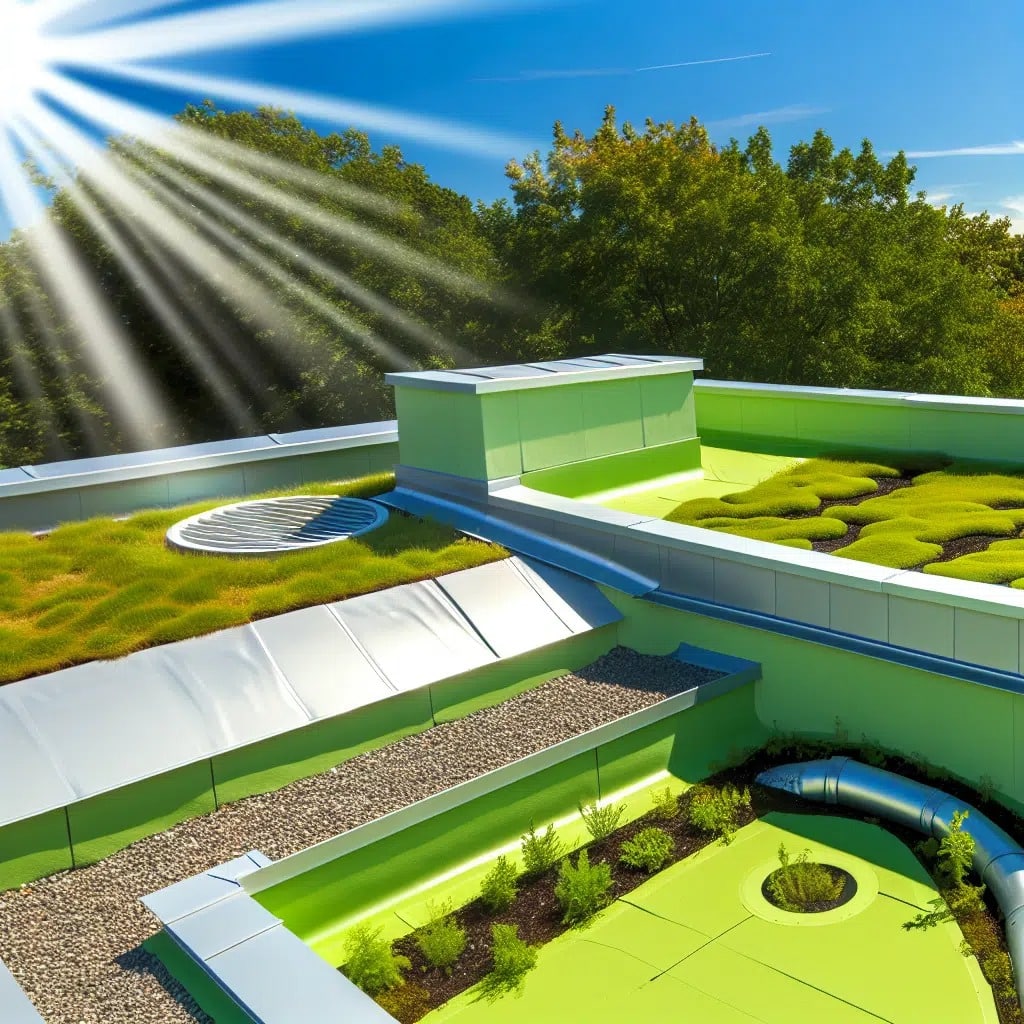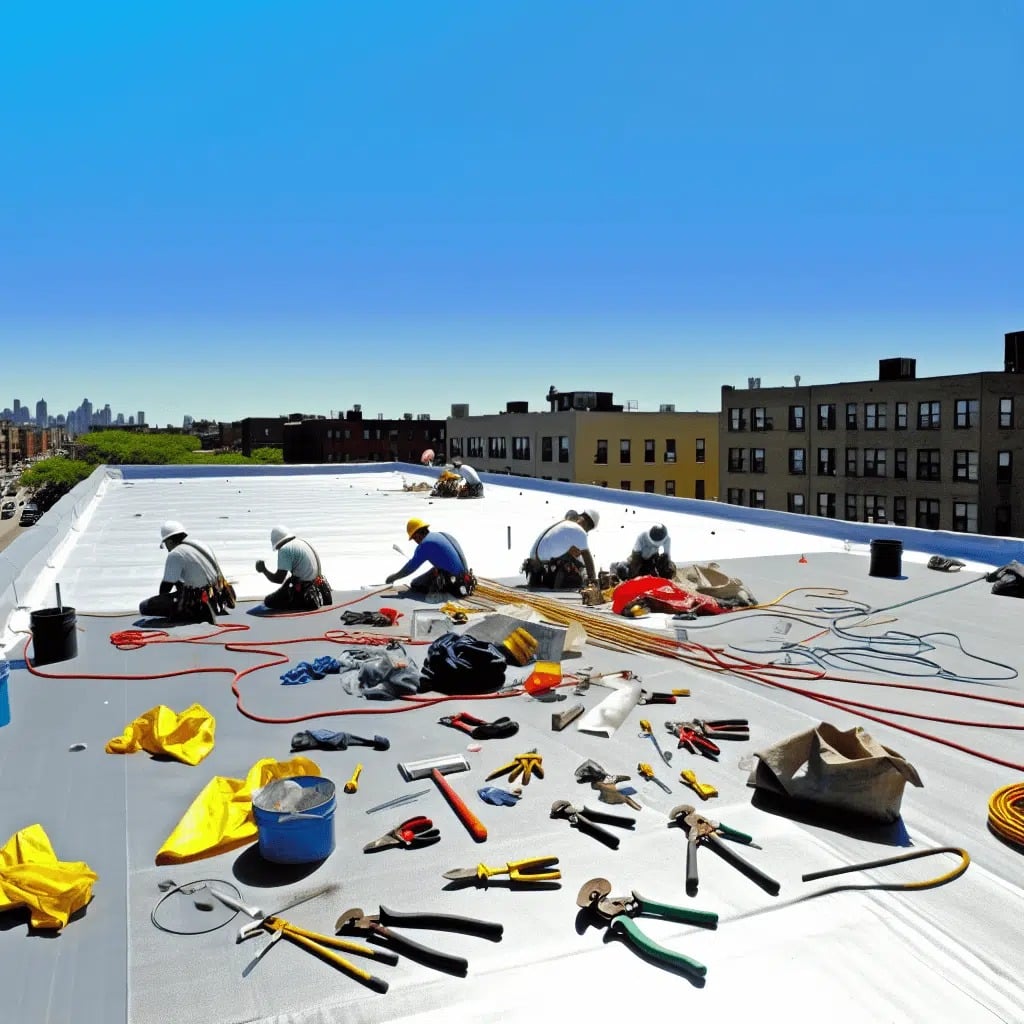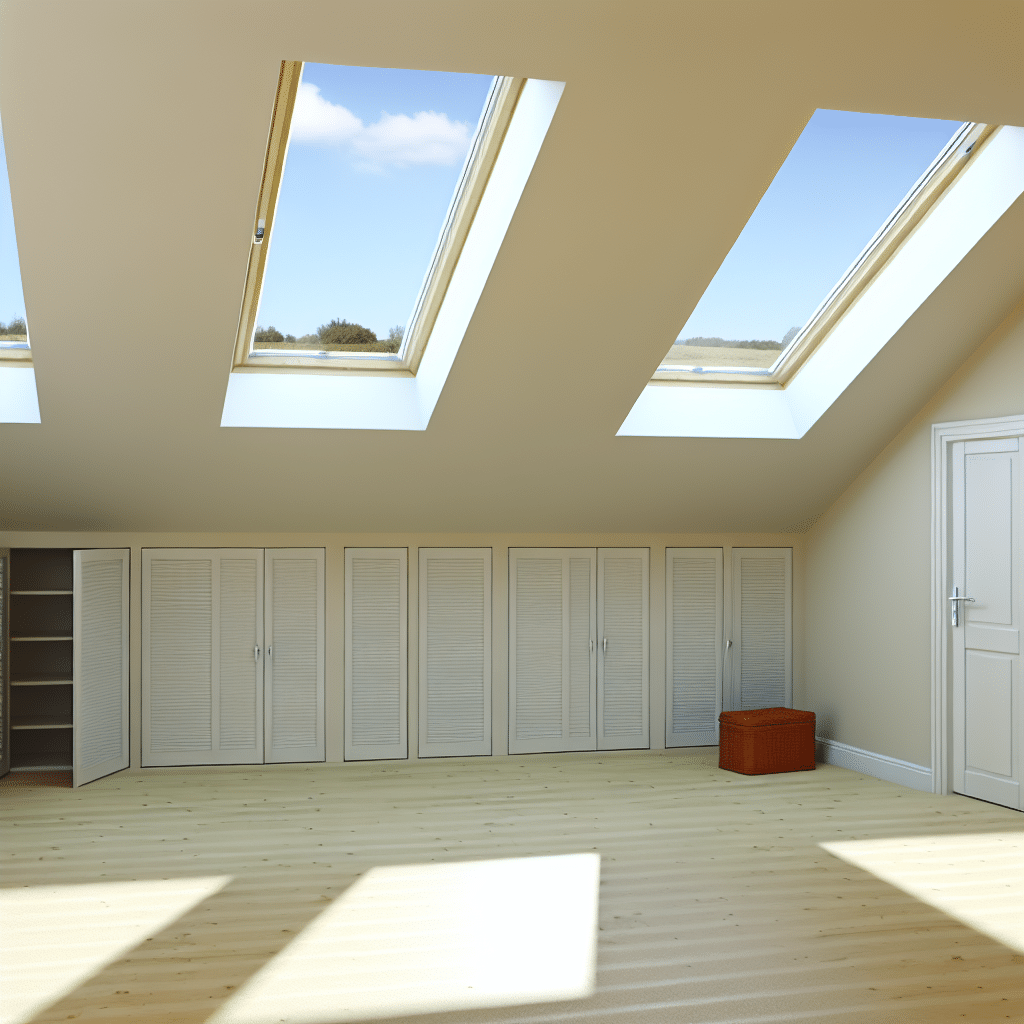- Discover the environmental and practical benefits of an eco-friendly green roof and identify signs indicating the need for an upgrade.
- Learn the step-by-step process of choosing the right materials and plants, and how to install and maintain your green roof sustainably.
- Avoid common pitfalls in green roof installation and upkeep and find out where to get expert help and advice for your DIY green roofing project.
Recognizing the Need for a Green Roof Overhaul
Green roofs are a splendid addition to any urban landscape, promising both aesthetic beauty and a plethora of environmental advantages. Yet, they are not without their challenges, and the first step towards reaping the full benefits of eco-friendly green roofs is recognizing when they’re underperforming. Common troubling signs include a lack of vegetation growth, persistent moisture issues, and visible wear on the waterproof membrane. Paying heed to these early warning signs can prevent more significant issues down the line.
Evaluating your roof’s suitability for a green transformation is imperative before you begin. A roof inundated with standing water after rain, sagging in places from potential structural weakness, or scattered with debris that hinders growth and drainage is a call to action. Consulting with a structural engineer or a roofing specialist with expertise in green installations is a crucial step. These professionals can identify whether your current roof can support the lush greenery envisioned or if reinforcement is needed.
Selecting the right vegetation for your green roof is not just a matter of personal preference but also a critical choice for your roof’s longevity. In Southern New England where the summers heat up and rain can be sparse, choosing drought-resistant and native species will ensure a thriving rooftop garden. The hardiness of these plants is a treasure, reducing the need for frequent maintenance and the frustration of replacing wilted greens. Opting for the right plant life spells fewer headaches and a flourishing, vibrant roof.
Selecting the Premier Materials for Your Green Oasis
Once identified as a candidate for a greener tomorrow, your roof demands high-quality, sustainable resources. The pursuit of eco-friendly green roof benefits rests on the selection of materials that provide longevity and environmental harmony. Water retention layers, root barriers, and eco-conscious drainage systems become the unsung heroes, essential for a high-performing green roof. Southern New England residents can explore local options for these materials, ensuring that their roof becomes a model for sustainable living.
With the foundation set, it’s time to address the core of any green roof—its vegetation and soil. The soil composition should be of a lightweight mix, promoting easy root growth and excellent water management. Opt for a growing medium that’s tailored for your specific plant selections—ones that can withstand Southern New England’s sometimes unpredictable summers. To ensure that you have access to everything needed for your project, consider the extensive range of services and supplies at Rinaldi Brothers, which include expertly curated resources for your green roofing needs.
Charting a Course for Impeccable Drainage and Irrigation
It isn’t just about what’s on top; what lies beneath matters just as much. A robust system to manage Southern New England’s summer downpours is essential to preventing waterlogged plants and structural damage. By thoughtfully planning both drainage and irrigation solutions, you ensure that the green roof remains vibrant and efficient. In this balance of water inflow and outflow, we find the secret to sustainable roof gardening—minimal input for maximum output.
Devising a system that conserves water while keeping vegetation in top form demands expertise. Techniques such as drip irrigation can deliver water directly to the roots, reducing evaporation and waste. Pair it with cutting-edge drainage solutions that are friendly to both your plants and the precious resource that is water, and you have a winning combination that honors the tenets of sustainability. Such systems look complex, but with the right guidance from a specialist, you can achieve a self-sustaining ecosystem on your rooftop.
Step 1: Understand the Basics of Green Roofs
Begin with a brief introduction to what eco-friendly green roofs are and how they contribute to environmental sustainability. Explain their role in reducing the urban heat island effect and their benefits for energy efficiency.
Step 2: Evaluate Your Roof’s Suitability
Guide the reader on how to assess their current roof structure to determine if it can support the additional weight of a green roof. Mention the importance of consulting with a structural engineer or a green roofing specialist.
Step 3: Choose the Right Vegetation
Discuss how to select appropriate plants for a green roof in Southern New England, taking into account the summer climate conditions. Highlight drought-resistant and native plant species that thrive with minimal maintenance.
Step 4: Select High-Quality Green Roofing Materials
Suggest considerations for eco-friendly materials that are crucial for the installation of a green roof, such as water retention layers, root barriers, and drainage systems that are sustainable and have a low environmental impact.
Step 5: Plan for Adequate Drainage and Irrigation
Describe the importance of proper drainage and irrigation systems to prevent waterlogging and ensure plant health. Provide guidance on installing these systems in a way that conserves water and aligns with eco-friendly practices.
Step 6: Install the Green Roof Layers
Detail the process of layering the roofing materials, starting from waterproof membranes, followed by insulation, drainage layers, growing medium, and finally, the vegetation. Emphasize the role of each layer in creating a successful green roof.
Step 7: Regular Maintenance and Upkeep
Outline the maintenance tasks required to keep a green roof healthy, such as weeding, fertilizing, and trimming. Stress the importance of routine inspections, especially after extreme weather events, to ensure the green roof’s longevity.
Step 8: Monitor the Green Roof’s Performance
Encourage the reader to track the performance of their green roof over time, focusing on its benefits such as energy savings, increased biodiversity, and improved air quality. Advocate for the use of tools or services that can help document and analyze these eco-friendly green roof benefits.
Avoiding Common Green Roofing Mistakes
The journey to an eco-friendly rooftop is filled with good intentions, yet it’s easy to stumble without proper guidance. Missteps can not only hinder the performance of your green roof but can also lead to costly repairs down the line. Let’s navigate through some common pitfalls so you can enjoy the full benefits of eco-friendly green roofs without unwelcome surprises.
Mistake 1: Underestimating Structural Requirements
Attempting to install a green roof without a thorough evaluation of your roof’s load-bearing capacity can be a grave error. Green roofs are heavier than traditional roofs, especially when saturated with rain. Prevent this by consulting with a structural engineer or a specialized green roof contractor before you begin the process.
Mistake 2: Choosing Incompatible Plant Species
It’s essential to select plants that are not only aesthetically pleasing but also suitable for Southern New England’s summer climate. Opting for vegetation that cannot withstand the local weather will lead to a failing green roof. Stick with drought-resistant and native species for a low-maintenance, thriving rooftop garden.
Mistake 3: Skimping on Waterproofing and Drainage Layers
Good waterproofing is the backbone of any green roof, and neglecting this step can lead to leaks and water damage. Similarly, inadequate drainage can result in waterlogged plants and root rot. Invest in high-quality waterproof membranes and carefully planned drainage to secure your green investment.
Mistake 4: Oversight in Maintenance Planning
Believing that a green roof is a set-it-and-forget-it feature can lead to neglect and deterioration. Green roofs require regular weeding, fertilizing, and inspections, particularly after extreme weather events. Plan a maintenance schedule that aligns with the needs of your green rooftop ecosystem.
Mistake 5: Improper Installation of Layers
Each layer of a green roof serves a specific function, and incorrectly installing these can compromise the roof’s integrity. From the order of the layers to the choice of growing medium, mistakes can lead to poor plant health and insulation issues. Adhere to the recommended installation guidelines or hire a professional to ensure it’s done correctly.
Mistake 6: Ignoring Local Regulations and Incentives
Overlooking local building codes, permits required for green roof construction, or available incentives for sustainable building practices can be a costly mistake. Southern New England residents should research or consult with local authorities to stay compliant and possibly benefit from eco-friendly incentives. Awareness and adherence to regulations can facilitate a smoother green roof installation journey.
Laying the Foundations for a Green Roof
Installation is a critical phase where each layer of your green roof is meticulously laid out. Starting with a high-quality waterproof membrane protects your home from water damage and serves as the initial line of defense. Next, robust insulation is added, acting as a critical thermal shield for both warm and cool months in Cranston.
Above the insulation, a properly designed drainage layer ensures excess water finds a clear path away from your roof, preventing over-saturation of the plants. Then comes the growing medium — light, fertile, and engineered for drainage — to foster robust plant growth. Finish with your carefully selected, climate-resilient plants to complete your green roof structure.
Maintenance: Keeping Your Green Roof Thriving
Like any garden, a green roof requires nurture and care. Regular weeding, fertilizing, and trimming keep your roof’s ecosystem flourishing and prevent any one plant species from taking over. Performed routinely, these tasks are your green roof’s foundation for long-term health and vigor.
Heavy weather can be unkind, so inspections post-storms are essential in maintaining the integrity of your green roof. Addressing small issues promptly can prevent larger, costlier repairs down the line. For local expertise, Rinaldi Brothers can offer ongoing support and advice for maintaining your eco-friendly rooftop sanctuary.
Visit us through our social media page for up-to-date news and new projects we’re working on.



